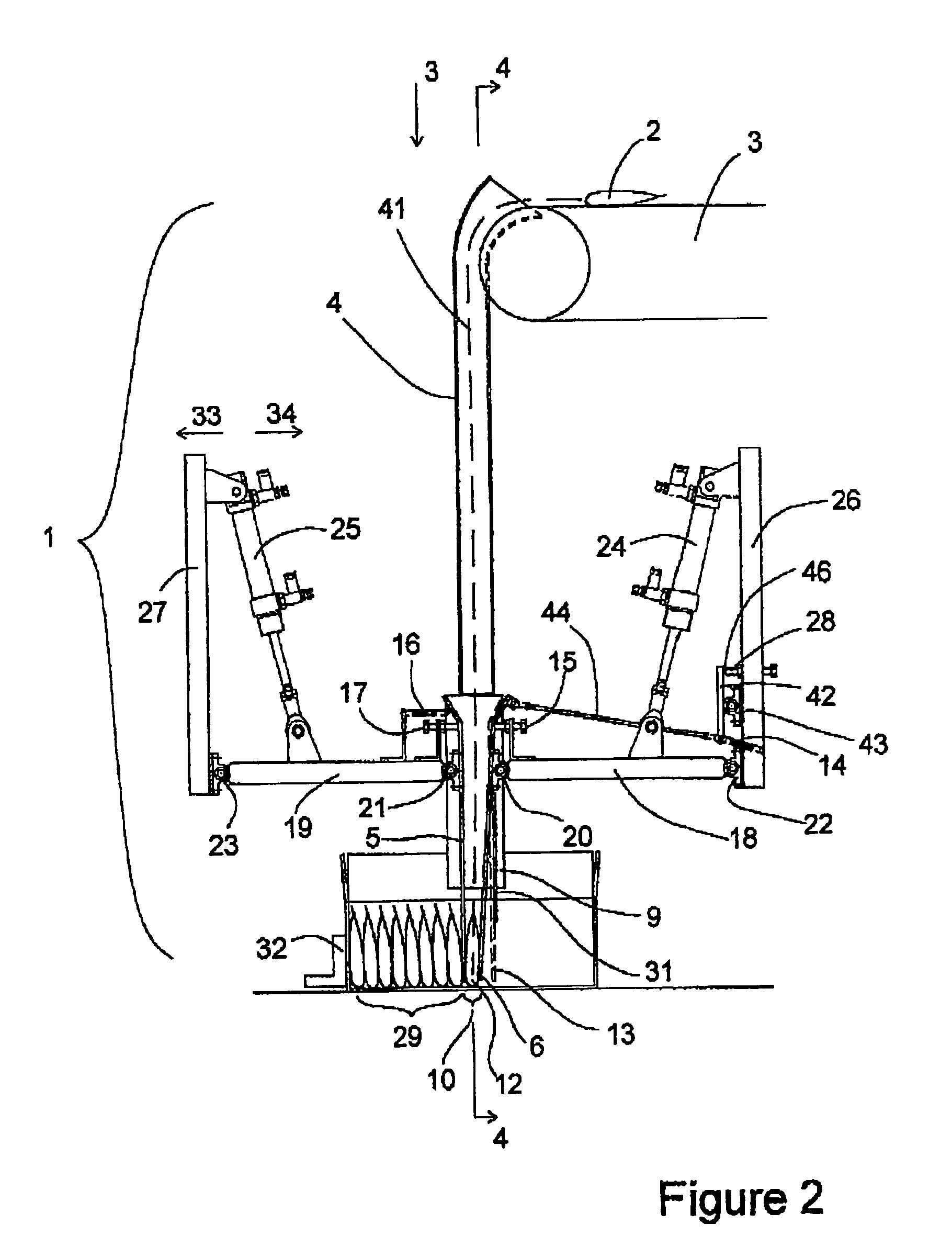Device for filling a container with a plurality of objects
a technology for containers and objects, applied in the direction of conveying parts, stacking articles, solid materials, etc., can solve the problems of slack filling, high cost, and inability to meet the requirements of high-speed operation, and achieve the effect of facilitating rapid diagnosis of the cause of the problem, high maximum operating speed, and high operational reliability of packing machinery
- Summary
- Abstract
- Description
- Claims
- Application Information
AI Technical Summary
Benefits of technology
Problems solved by technology
Method used
Image
Examples
Embodiment Construction
[0072]It will be understood by those skilled in the art that the present invention can be implemented in a number of different ways. The preferred embodiment will now be described with reference to the figures.
[0073]Referring to FIGS. 1, 2, 3 and 4, there is shown a device 1 for guiding flexible bags 2 from a conveyor 3 into a shipping container 7. A chute 4 is provided to guide the bags 2 from the conveyor 3 to the working elements of the device 1. The device consists essentially of a first moveable restraining member 5, having an anterior surface 5a and a posterior surface 5b and a second moveable restraining member 6, having an anterior surface 6a and a posterior surface 6b. The gap between the surfaces 5a and 6a defines a moveable cavity 10 into which the bags 2 are guided. A bag 12 is shown in FIG. 2 having been guided into position at the floor of the container 7.
[0074]The first and second restraining members 5, 6 are attached to mechanically operated sub-assemblies that actua...
PUM
| Property | Measurement | Unit |
|---|---|---|
| coefficient of friction | aaaaa | aaaaa |
| gravity | aaaaa | aaaaa |
| force | aaaaa | aaaaa |
Abstract
Description
Claims
Application Information
 Login to View More
Login to View More - R&D
- Intellectual Property
- Life Sciences
- Materials
- Tech Scout
- Unparalleled Data Quality
- Higher Quality Content
- 60% Fewer Hallucinations
Browse by: Latest US Patents, China's latest patents, Technical Efficacy Thesaurus, Application Domain, Technology Topic, Popular Technical Reports.
© 2025 PatSnap. All rights reserved.Legal|Privacy policy|Modern Slavery Act Transparency Statement|Sitemap|About US| Contact US: help@patsnap.com



